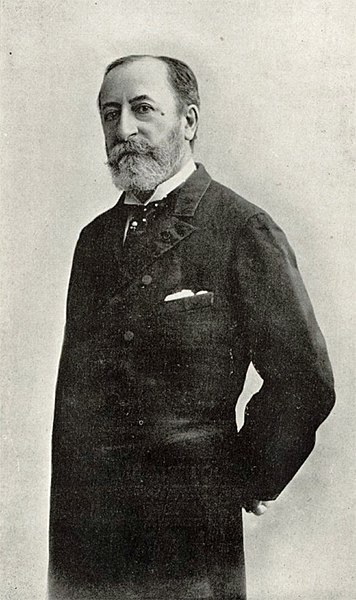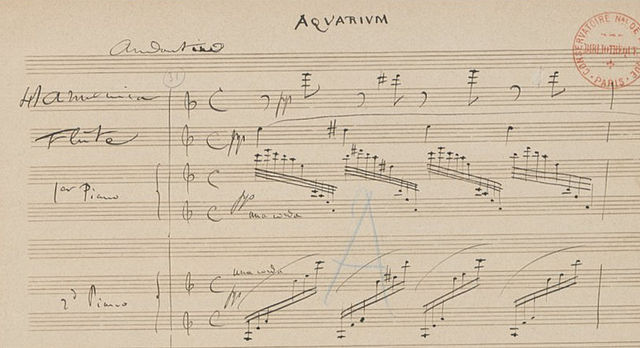The Carnival of the Animals
The Carnival of the Animals is a humorous musical suite of fourteen movements, including "The Swan", by the French composer Camille Saint-Saëns. The work, about 25 minutes in duration, was written for private performance by two pianos and chamber ensemble; Saint-Saëns prohibited public performance of the work during his lifetime, feeling that its frivolity would damage his standing as a serious composer. The suite was published in 1922, the year after his death. A public performance in the same year was greeted with enthusiasm, and the work has remained among his most popular. In addition to the original version for chamber ensemble, the suite is frequently performed with a full orchestral complement of strings.
Saint-Saëns circa 1880
Part of the original manuscript score of "Aquarium". The top staff was written for the (glass) "Harmonica". Playⓘ
Title page to "Fossils" in the manuscript including drawing by the composer
Image: Orchesterwerke Romantik Themen
"Le cygne", pronounced [lə siɲ], or "The Swan", is the 13th and penultimate movement of The Carnival of the Animals by Camille Saint-Saëns. Originally scored for solo cello accompanied by two pianos, it has been arranged and transcribed for many instruments but remains best known as a cello solo.
Swan, inspiration for Saint-Saëns' piece Le cygne
Hanyu performing to "Notte Stellata (The Swan)" at the 2018 Winter Olympics






